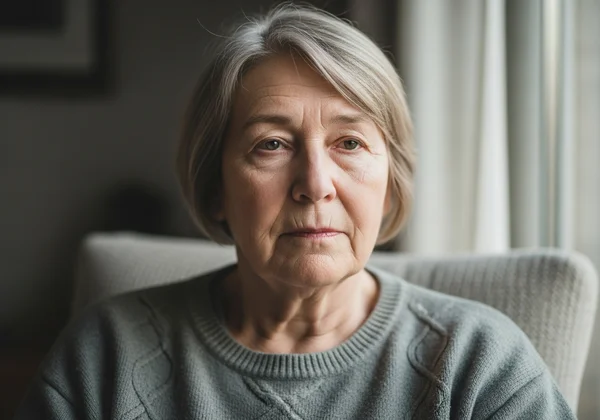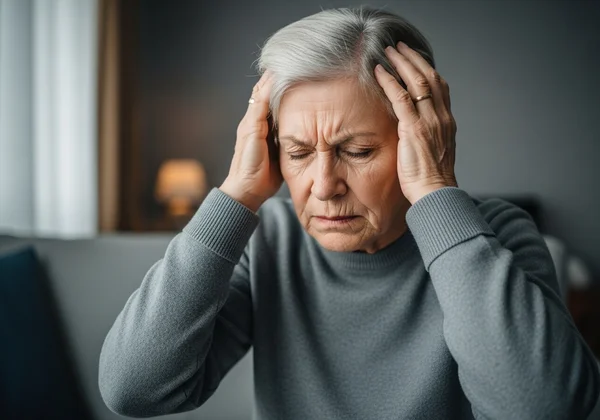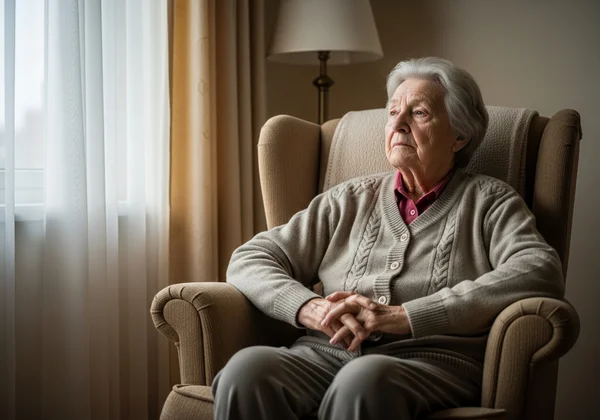Geriatric Depression Scale Guide: Symptoms, Causes & Support
Depression in later life is more than just a fleeting case of the blues; it's a significant health concern that affects millions of older adults, often silently. Understanding geriatric depression is the first step toward providing meaningful support for yourself or a loved one. Are you equipped to recognize the signs and know what steps to take next? This comprehensive guide will walk you through the symptoms, causes, and support systems available, empowering you with the knowledge to foster better mental health in the golden years. For those seeking a preliminary check, a confidential screening can provide valuable insights. You can get a free assessment on our website.
What is Geriatric Depression? Understanding the Condition
Geriatric depression is a mood disorder that impacts thoughts, feelings, physical health, and behaviors in adults typically over the age of 55. It's a genuine medical condition, not a normal part of aging. Unfortunately, it often goes undiagnosed and untreated because its symptoms can be mistaken for other age-related health issues or personality changes. Recognizing its distinct nature is crucial for effective intervention.

More Than Just "Feeling Down": Defining Clinical Depression in Seniors
Everyone feels sad or discouraged from time to time. However, clinical depression is different. It involves persistent feelings of sadness, emptiness, or hopelessness that last for at least two weeks and interfere with daily activities like eating, sleeping, or socializing. Unlike temporary mood shifts, clinical depression in seniors doesn't simply go away on its own and requires supportive care and often professional intervention to manage.
The Unique Nuances of Depression in Older Adults
Depression can manifest differently in older adults compared to younger individuals. Seniors are less likely to express feelings of sadness. Instead, they might complain more about physical ailments, such as unexplained aches and pains, or show a noticeable lack of energy and motivation. Irritability, confusion, and memory problems can also be prominent symptoms, sometimes being misdiagnosed as signs of dementia. Understanding these subtle differences is key to early detection.
Recognizing Senior Depression: Key Symptoms & Warning Signs
Identifying the signs of depression is the most critical step toward getting help. Caregivers, family members, and seniors themselves should be aware of changes in mood and behavior. Because symptoms can be subtle, paying close attention to new patterns is essential for early recognition.
Behavioral Changes to Watch For in Elderly Loved Ones
Some of the most telling indicators of depression are changes in behavior. An older adult may lose interest in hobbies and activities they once enjoyed, withdraw from social engagements, or neglect personal care like grooming and hygiene. You might also notice increased agitation, restlessness, or a significant change in appetite leading to weight loss or gain. These behavioral changes are often clear signals that something is wrong.
Physical Manifestations: When Depression Hides Behind Aches and Pains
Depression is not just an emotional state; it has very real physical consequences. Many older adults with depression report persistent and unexplained physical manifestations. These can include chronic pain, headaches, digestive issues, and fatigue that doesn't improve with rest. When a doctor can't find a clear medical cause for these physical complaints, it’s worth considering mental health as a potential underlying factor.

Common Causes & Risk Factors for Elderly Depression
No single cause triggers depression in older adults. Instead, it often results from a combination of genetic, biological, environmental, and psychological factors. Certain life events and health conditions common in later life can significantly increase the risk.
Life Transitions and Social Isolation's Impact on Mood
Later life is often marked by significant changes. Retirement, the loss of a spouse or friends, and moving out of a family home can all trigger feelings of grief and loneliness. This social isolation is a major risk factor for depression. Without a strong support network or a sense of purpose, seniors can become vulnerable to persistent sadness and a decline in mental well-being.

The Link Between Chronic Illness, Medications, and Mental Health
Living with a chronic illness like heart disease, diabetes, or arthritis can be physically and emotionally draining, often leading to depression. The stress and physical limitations associated with these conditions can take a toll on mental health. Furthermore, side effects from certain medications used to treat these conditions can contribute to or worsen depressive symptoms. It’s important to discuss all medications with a doctor to understand potential impacts on mood.
The Role of Screening: Using the Geriatric Depression Scale (GDS)
Because the symptoms of geriatric depression can be complex and easily overlooked, a formal screening process is incredibly valuable. Standardized tools provide an objective way to assess an individual's emotional state. The Geriatric Depression Scale (GDS) is a simple yet effective tool designed specifically for this purpose and can be a great starting point for a conversation about mental health. You can explore the Geriatric Depression Scale on our website.
Why the GDS is a Trusted Tool for Senior Depression Screening
The Geriatric Depression Scale (GDS) is one of the most widely used and respected screening instruments for depression in older adults. Developed by Dr. J.A. Yesavage and colleagues, its simple "yes/no" format makes it easy for seniors to complete without causing distress. It is a scientifically validated screening tool that helps identify potential depressive symptoms that warrant further evaluation by a healthcare professional.
How the Geriatric Depression Scale Works: An Overview
The GDS asks a series of questions about how the individual has felt over the past week. It is available in a full 30-item version and a shorter 15-item form for quick screening. The questions focus on mood and satisfaction with life, avoiding physical symptoms that could overlap with other medical conditions. After completing the questionnaire, a score is calculated that indicates the likelihood of depression. You can take the GDS test quickly and confidentially online.

Effective Support & Treatment Options for Senior Depression
The good news is that geriatric depression is highly treatable. A combination of professional care, lifestyle adjustments, and strong social support can make a profound difference. The goal is not just to manage symptoms but to restore a sense of joy, purpose, and well-being.
Holistic Approaches: Lifestyle Changes and Social Engagement
Simple changes can have a powerful impact on mood. Encouraging regular physical activity, even gentle exercises like walking, can boost endorphins. A balanced diet and a consistent sleep schedule also contribute to emotional stability. Fostering social connections—whether through family visits, community centers, or hobby groups—is one of the most effective holistic approaches to combating loneliness and improving mental health.
Professional Interventions: Therapy, Medication, and Integrated Care
For moderate to severe depression, professional help is essential. Psychotherapy, particularly cognitive-behavioral therapy (CBT) or interpersonal therapy, can help seniors develop coping skills. In some cases, antidepressant medication may be prescribed. The most effective professional interventions often involve integrated care, where a team of healthcare providers works together to address both mental and physical health needs.
Empowering Action: Communicating with Doctors & Next Steps
Taking the first step is often the hardest part. Once you suspect depression, it's vital to seek professional guidance. Open communication with a doctor is the key to getting an accurate assessment and a suitable treatment plan.
Preparing for a Consultation: What to Discuss with a Healthcare Provider
Before the appointment, make a list of all observed symptoms—emotional, behavioral, and physical. Note when they started and how they affect daily life. If you've used a screening tool, bring the results. Be ready to discuss the senior’s medical history and current medications. This preparation helps the healthcare provider get a complete picture and make an informed evaluation.
Finding Support Networks and Resources for Seniors and Caregivers
You are not alone. Numerous organizations offer resources for both seniors and their caregivers, including local support groups, mental health services, and community centers for the elderly. Building a strong support network provides emotional encouragement and practical advice, making the journey to recovery less daunting. Exploring the resources available on our site, like the online GDS tool, is a positive first step.
Taking the Next Step: Embracing a Brighter Future for Senior Mental Health
The journey to better mental health for seniors begins with awareness and action. By understanding the nuances of geriatric depression, recognizing its signs, and seeking timely support, we can profoundly impact the well-being of our older adults. Remember, early screening, like that offered by the Geriatric Depression Scale, is a vital first step, unlocking pathways to effective treatment and a renewed sense of purpose. Let's empower ourselves and our loved ones with the knowledge and courage to foster mental wellness in every stage of life.
Ready to take the first step? Visit our homepage to use the free, confidential Geriatric Depression Scale and gain valuable insights today.
Frequently Asked Questions About Geriatric Depression & GDS
What is the Geriatric Depression Scale (GDS) and who can use it?
The Geriatric Depression Scale (GDS) is a self-report questionnaire designed as a screening tool to identify symptoms of depression in older adults. It can be used by seniors themselves, family members or caregivers helping a loved one, and healthcare professionals conducting initial assessments.
Is the Geriatric Depression Scale a diagnostic tool for depression?
No, it is very important to understand that the GDS is a screening tool, not a diagnostic tool. It indicates the potential presence of depressive symptoms. A high score suggests that a comprehensive evaluation by a qualified healthcare professional, such as a doctor or psychologist, is necessary to make an official diagnosis.
What is considered a normal score on the Geriatric Depression Scale?
On the 15-item short form, a score of 0-4 is generally considered within the normal range. A score of 5-9 suggests mild depression, and a score of 10 or more suggests moderate to severe depression. However, interpreting any score should be done with caution and ideally discussed with a professional. You can discover your score on our site.
What should I do if a senior has a high score on the GDS?
A high score on the GDS should be taken seriously. The most important next step is to schedule an appointment with a healthcare provider for a thorough evaluation. Share the GDS results with the doctor and discuss the observed symptoms to determine the best course of action.
What is the age range for the Geriatric Depression Scale?
The GDS was specifically designed and validated for use with older adults, generally considered to be individuals aged 55 and above. It is tailored to the unique ways depression can present in this demographic, making it a highly relevant and effective tool for this population.